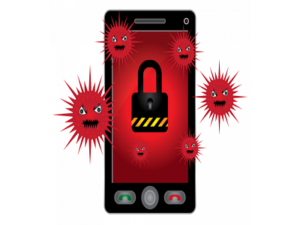The use of mobile and hand-held devices reaches at an all-time high. Mobile Banking Security risk is very high as well. According to a KPCB (Kleiner Perkins Caufield & Byers) report, mobile digital media is now outpacing desktop usage. The report stated that adults with access to digital media use mobile 51 percent of the time compared to 42 percent for desktop usage and 7 percent for all other devices.

Mobile banking concept
Mobile Banking is bringing some massive change in the banking industry which is revolutionizing the way we do banking . Around the globe, billions of users are using a wide range of mobile devices to meet their banking needs. More and more users are joining mobile banking every day. Most of the major banks are now letting their customers to carry out daily banking activities via mobile app. Bank customers can now use a smartphone or tablet for basic transactions like check deposits and bill payments, making it easier to keep an eye on finances without a trip to the ATM.
Why Is It Risky?

Banking with mobile device
With that growth come a whole new set of threats. financial institutions must understand and address the risks associated with mobile banking. These risks may come in many forms, including malware, corrupt apps, third-party apps, unsecured Wi-Fi networks, risky consumer behavior flawed authentication, lost or stolen devices and more. And it does not matter whether an institution uses a proprietary or third-party mobile banking application – the bank owns the risks.
Mobile banking is a very attractive target for cyber criminals as an exploitation easily can result in massive profits for the criminals. Due to the quick growth in mobile banking with very limited fraud detection and prevention capabilities, it became the No. 1 target for the cyber criminals. As a result, Mobile banking security became a major concern for the financial industry.
Major Risks with Mobile Banking Security:
The mobile threat landscape is ever-evolving, and institutions and consumers alike are wary of the risks. Among today’s growing concerns:
Mobile Malware – Trojans, viruses and rootkits migrating from traditional online banking and designed specifically for the mobile marketplace. Researchers see an increase in mobile malware development – in pace with market growth.
Third-Party Apps – Consumers love their smart phone and tablet applications, but often these apps come from third parties with questionable security practices. Or worse, the apps are created by fraudsters and loaded with malware.

mobile banking security risk
Unsecured Wi-Fi – The unsecured wireless network is a toll-free highway for fraudsters to gain access to mobile devices, either to seize control of or gain access to account information.
User Behavior – Consumers are prone to download third-party apps, use unsecured wireless networks, open and click links in SMS text messages and e-mails, and lose their mobile devices. Mobile-use behavior is creating a suite of vulnerabilities, and fraudsters are eager to take advantage.
Poor App Design, Configuration or Corrupt Apps- Using mobile apps for banking tends to be safer than logging in via your mobile browser. However, every mobile platform has unique characteristics that these apps must prepare for. Developers may not fully understand the risks associated with mobile banking and accidentally leave vulnerabilities open for fraudsters to exploit as a result.
Counter-Measures:
Conclusion
The many benefits to providing customers with mobile banking apps far exceeds the risk; however, it is critical to arm with the current capabilities that are required to defend and protect your apps and business from security breaches, resist tampering, and ward off, as much as possible, hacking attacks and malware exploits.
As mobile banking continues to grow, so will the number of exploits, and so development teams will face constant challenges to protect their business from security issues. It is, therefore, critical to factor security into your long-term mobile banking app development strategy and align with proven partners that can help you ensure your success.